1 Introduction
From August 2018 until December 2021, the Museum für Naturkunde Berlin (MfN) installed an area within the museum’s galleries to experiment with new formats and opportunities for opening the research and exhibitions to dialogue and participation with different stakeholder groups. The act of opening the research and collections to multiple perspectives and expertise is built on the idea that this will improve public good outcomes for the museum and enhance trust in science. The “Experimental Field for Participation and Open Science” set the focus on museum visitors, but also on reaching new target groups that were not necessarily in contact with science previously. The practice of opening and participation was tested, evaluated, and further developed over the course of three years. On almost 1000 m within the exhibition tour, an area was created that is flexible and open for every visitor during opening hours, providing space for formats of dialogue, participation and exchange.
This paper provides an overview of how the overall approach of dialogue and participation in the museum developed, how the area of the Experimental Field was created and managed as well as the different formats and settings that were tested and evaluated. The authors hope to share their experience with other practitioners in the field of public engagement and transdisciplinary work in science as well as museum practitioners trying to open museum work for participation and dialogue.
2 Genesis of ideas
2.1 Visitor participation in the Museum für Naturkunde Berlin
Interest and trust in science has been very prominent in society for years, as the current Science Barometer [Wissenschaft im Dialog, 2022] shows once again. We argue that involving multiple stakeholders in knowledge production and integrating new perspectives in research and collection work can increase this interest and possibly also the trust in science. Museums are particularly suitable as places for dialogue, exchange and participation in research and collections. On the one hand, they are perceived as objective and trustworthy actors and, on the other hand, they represent a “third place” outside the workplace and home where different people meet [Oldenburg, 1999]. In addition, the museum seems to be a suitable place to impart and practice the skills for deliberation in the sense of deliberative literacy.1 By dealing with different positions, scientific findings and controversies on research issues, the ability to engage in constructive debate is trained.
Objects can facilitate the entry into a debate (especially for people who do not usually participate in intellectual debates), as they can accompany and illustrate the topics of discussion in a different way. In this way, different and possibly new arguments and points of view can be included and discussions can be conducted in a more inclusive manner [Rössig, Herlo et al., 2018].
As Bandelli and Konjin showed the public interest increases the more museums are perceived as places of interaction and exchange [Bandelli & Konijn, 2015, p. 132]. As Schuijer et al. point out, science museums are very well suited to take on a participation brokerage role. This requires that participation is embedded in the organization’s understanding of its role and that the organizational structure enables participation [Schuijer, van der Meij, Broerse & Kupper, 2022]. This paper aims to show this reflective process around experimental processes of a science museum as participation broker.
The active research taking place at the MfN offers the opportunity to present science as a process, to take up controversies and debates, and thus to train critical science literacy. It is the idea of “understanding ‘how science works’ in practice [and] going beyond [ …] the processes that actually go on in laboratories and other research settings” [Hine & Medvecky, 2015]. At the same time, a social exchange across filter bubbles is stimulated, as well as informed and reflected opinion-forming processes on scientific topics [Durant, 2004; Priest, 2013].
In a two-year exploratory project that took place between 2016 and 2018, the MfN determined what participation in a research museum might look like. A co-design process defined the basic principles, challenges, and conditions. Three pillars emerged as the basis for external participation: 1) spaces for participation, 2) enabling multi-perspectivity and 3) providing a space for debates on social issues. In addition, fields of participation were identified, each of which intervenes in the institution to a different depth and represents participation at different levels according to the step model of Arnstein [Arnstein, 1969] and the adaptation of Simon [Simon, 2010; Rössig & Jahn, 2019]. Applying this theory to a research museum means there must be a retroactive effect on the museum, its research, or collection. In order to ensure this retroactivity and the added value for the institution and science, the questions and formats must be well coordinated and the results must be communicated intensively.
In the Experimental Field, we focused on developing questions and starting points, where the participation of the visitors offers benefits for researchers and the museum in general. This added value can relate directly to the research questions, but also to ethical questions concerning the application of knowledge. Moreover, it can relate to the museum’s handling of objects and data, to social issues related to the museum’s themes, to questions of research ethics, or to making the various perspectives regarding the museum visible to subsequent visitors.
2.2 Science communication in the Museum für Naturkunde Berlin
The MfN, originally planned as an open scientific collection with access to all floors for visitors, first opened to the public 1889. However, a few years before the opening, the so-called “New Museum” idea came up, which involved separating the educational exhibition from the scientific collections. Although the building was not ideal for this purpose, it followed the global trend, as did other large international natural history museums, such as the Natural History Museum in London [Chalmers, 2004; Köstering, 2010].
After a renovation phase in 2007, the museum reopened and implemented a new communication structure for the exhibitions that focused strongly on the authentic communication of the museum’s research activities. Young adults were defined as the main target group for communication. Communication aimed at adults is also positively received by children [Moldrzyk, 2015, 2019]. In 2010, it was the first museum to give visitors an insight into its scientific alcohol collection [Nicholls, 2012]. The exhibition around the T-rex skeleton “Tristan” opened 2015 and showed research as a questioning process featuring scientists as holograms, explaining their research questions and methods to the public [Moldrzyk & Gallé, 2018]. Since 2017, scientists have been digitizing parts of the collection in public, allowing visitors to enter into dialogue with them at the same time. For the temporary exhibition “ARTEFACTS”, opened in 2018, a format of direct interaction was created. Scientists were regularly available to converse with the public in the exhibition, either in person or via video call.
Building on this step-by-step development towards direct interaction at the MfN, it was a logical consequence to investigate even further and experiment with other formats in order to enable fruitful participation and dialogue.
3 Concept of the Experimental Field
The Experimental Field for Participation and Open Science served to develop new concepts of communication, dialogue and participation, putting them into practice, evaluating and adapting them. On almost 1000 m within the exhibition round walk, an open and flexible area was created providing space for dialogue, participation and exchange.
Conceptually, the Experimental Fields builds on the findings of research on visitor participation [Rössig, Jahn, Faber & Herlo, 2018].
All programs fulfill one or more of the following objectives defined for the Experimental Field:
-
Visualization of the diverse research projects and the collection.
-
Enrichment of the topics and objects of the museum through the perspectives and opinions of the visitors.
-
Support for direct communication and exchange between museum staff and visitors.
-
Enabling of social debates in connection with the topics of the museum and to stimulate opinion forming processes.
The Experimental Field also served as a platform for (young) scientists to communicate about scientific questions, interim results, methods and findings, and to test and train their own skills of direct communication and participatory design of research communication. On request, they were accompanied and advised by the team of the Experimental Field.
The main focus was on enabling regular visitors to take part in the open programs without prior knowledge of it, thus reaching a much wider audience than, for example, at evening events [Vohland, Diekämper, Moormann, Nettke & Rössig, 2018]. Additionally, special formats attracted certain target groups with specific interests and expertise. Examples of such formats are writing courses, photography courses, (comic) drawing classes. The Experimental Field developed new procedures in a targeted manner, adapted functioning formats, documented, and passed on experience with participation and dialogue in science.
4 Engaging design
The Experimental Field was intended to be a new place in the museum that is inviting and that creates space for various new formats of exchange and for encounters. The design of this area has helped to underline this and the location within the exhibition tour was of immense advantage. All visitors had to pass by the spaces and thus discovered what was taking place and could participate spontaneously. During the co-design process between 2016 and 2018, museum staff from all departments and visitors made suggestions on what participation in a research museum could and should look like. They also discussed what is needed and what resources are required. Other open interaction spaces in museums and science institutions around the world were analyzed and the needs from different departments of the museum were compiled. Coziness and accessibility have been repeatedly cited as central characteristics for spaces of exchange and participation. The spatial design was based on familiar places of social exchange, such as a kitchen or a living room, in order to reduce access barriers: here people usually communicate in an informal environment where they feel comfortable discussing and exchanging ideas. We have found that this works, because visitors seem to feel at home, sit down, take a book and chat, even if there is no format taking place.
The Experimental Field was designed in such a way that it can be used flexibly for different formats, such as research activities, workshops, and events. The workshop area with movable furniture could be extended and connected to other work areas. A counter was included where collection items could be stored safely. The vast living room area with furniture and a public part of the museum’s scientific library invited to stay and engage.
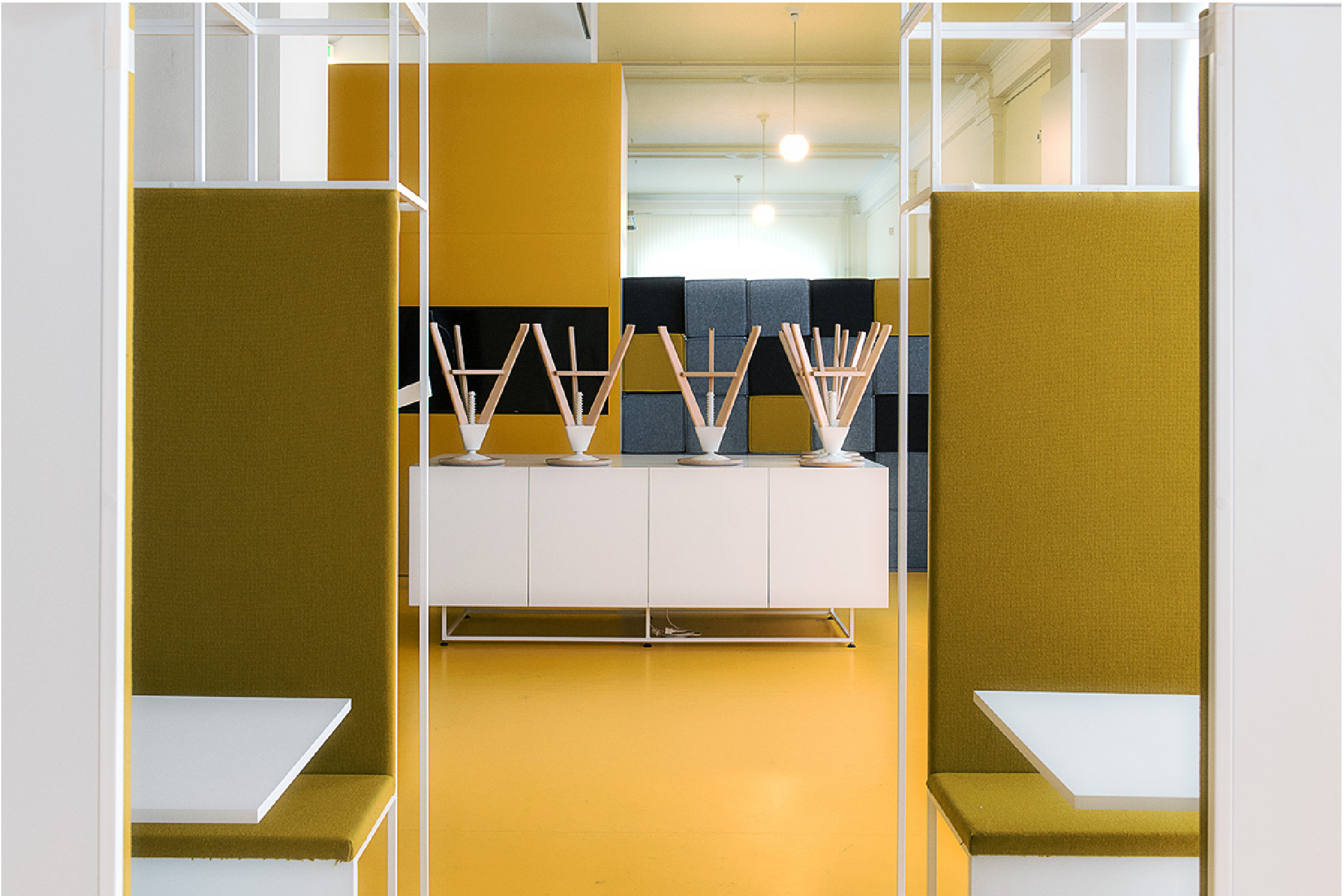
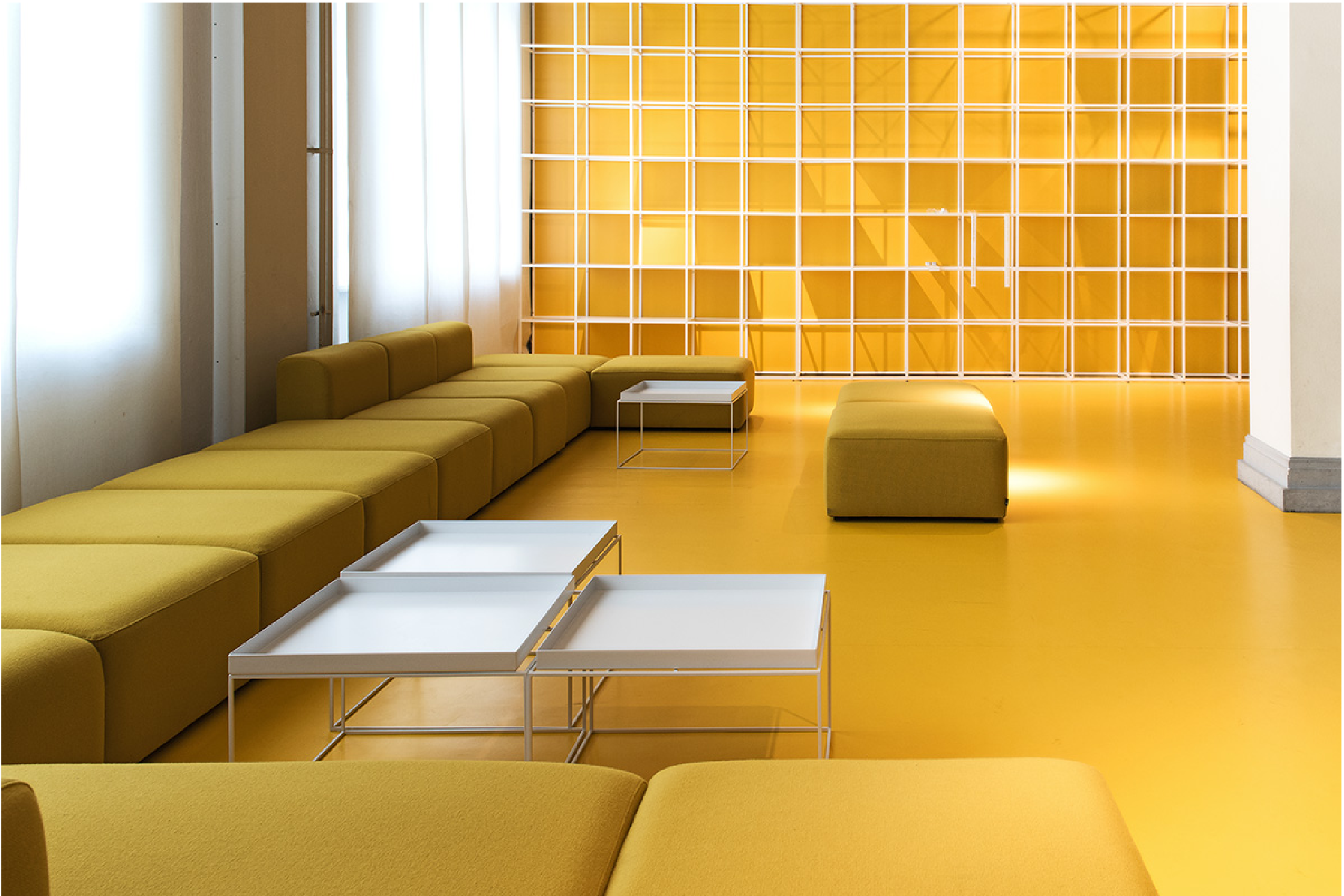
In addition to that, the kitchen was the centerpiece as it combined a unique kitchen atmosphere with a lecture room and a tribune/staircase to sit on that could be used for discussions, but would also transform into a theater scene.
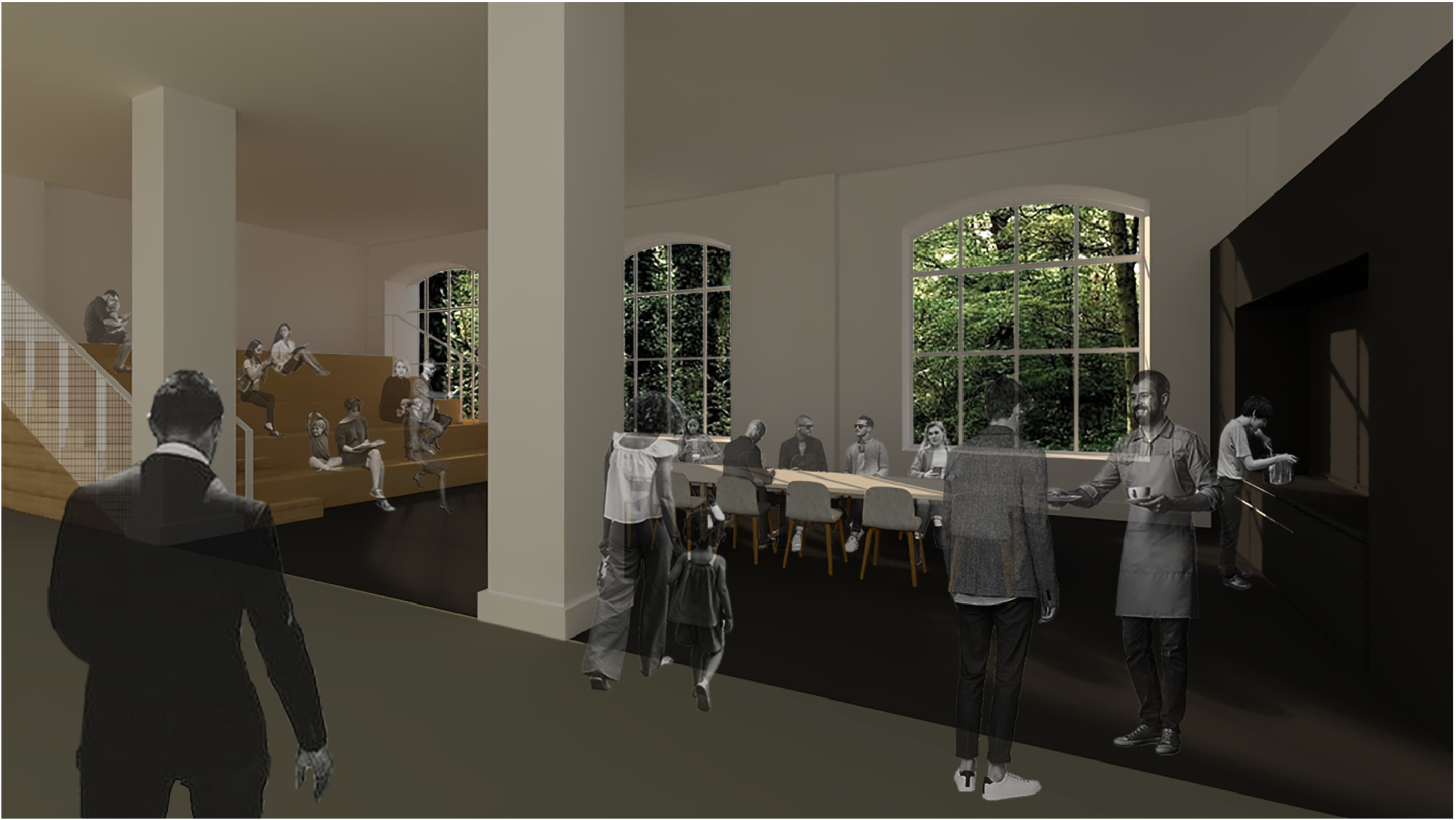
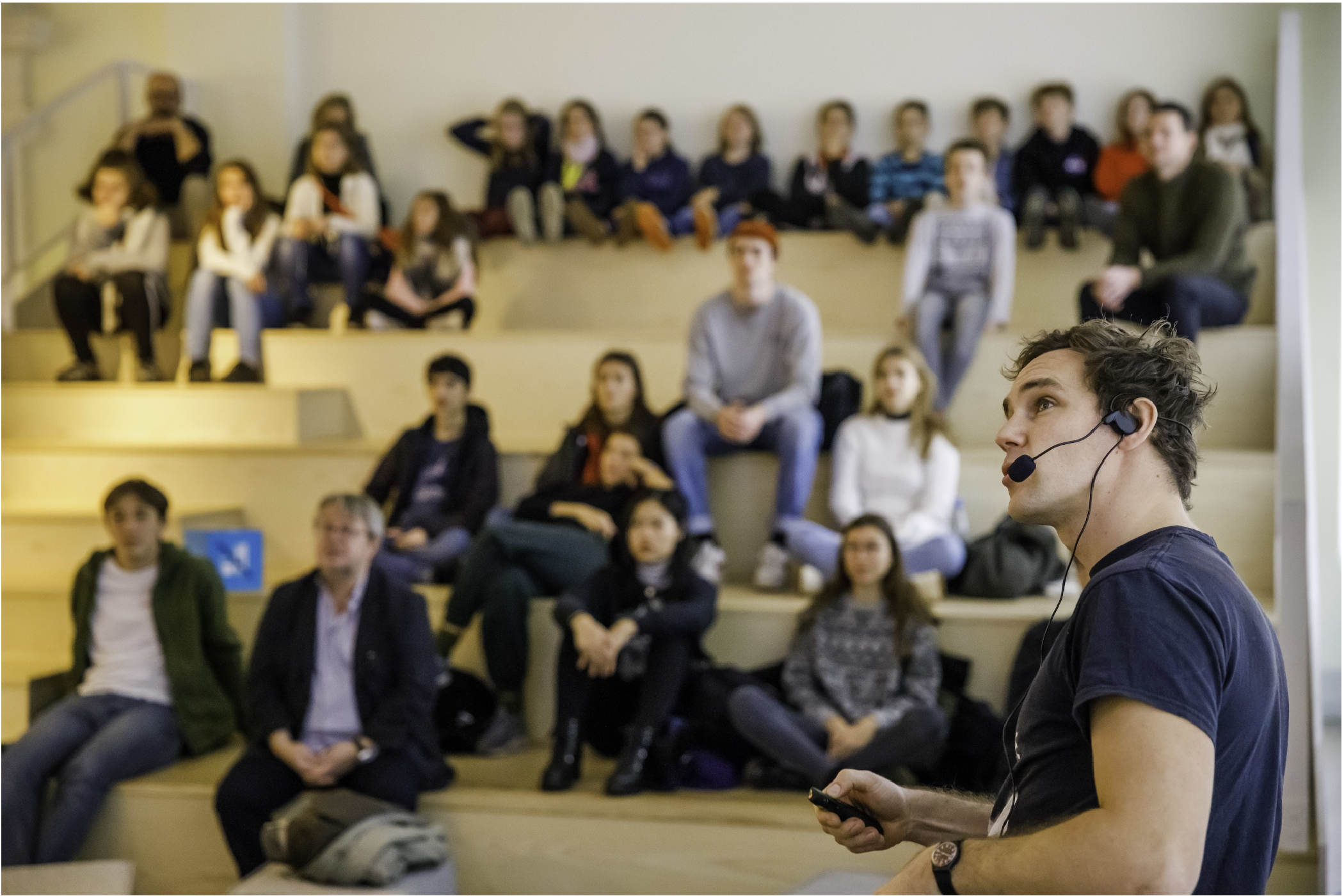
“Steps offer opportunities for sitting or lounging and can be designed in combination with readings, back and armrests, niches for small groups or amphitheatres where large crowds of people can watch entertainment. From an upper level it is often possible to look down on a crowd and feel separated from both but still feel part of the social scene, like the Spanish Steps in Rome” [Farmer & Louw, 1993, p. 42].
The design for the lecture tribune was inspired by the project “The Why Factory” by the Dutch architects MVRDV and the designer Richard Hutten. It included a bright color selection that clearly identifies the Experimental Field as a platform for exchange with an open and welcoming atmosphere.
The connection between the colors of the floor and the wall is not only a stylistic device to define the boundaries with the corridor. It also creates a more spacious feeling that contrasts with the historical monument building, both in terms of the kitchen cabinets with black geometry and the simplicity of the white shelf structure on the yellow wall in the reading area.
5 Programs
One of the aims of the Experimental Field is to fathom possibilities for real participation in research. Participation is defined as a process of fair sharing in which all interaction partners benefit equally [e.g. Piontek, 2017; Rössig, Jahn et al., 2018]. So how can conditions be created in which scientists also benefit from interaction and not only share their knowledge? The experiences with dialogue formats in the Experimental Field show that a fruitful exchange is particularly likely to take place if the researchers already enter into discussions with questions themselves. This can involve aspects of particular interest, but also terms and definitions that have different connotations in public discourse, ethical questions which concern processes of research or the application of research results, which are fed by the many external perspectives.
In museums, non-participating visitors to the galleries should also be able to understand what it is all about and how the processes took place. A moderation facilitates this, invites and introduces newcomers. Although dialogical formats are time-consuming and (depending on the format) also personnel-intensive, the initial results of the evaluation of such formats in the Experimental Field give reason to assume that they offer particularly great potential for all interaction partners.
Between August 2018 and December 2021, approximately 350 events of varying lengths took place in the Experimental Field with a total of nearly 12,000 active participants and approximately the same number of bystanders or online viewers. Participation varied in intensity. From pure spectatorship to a dialogue with researchers to active participation in workshops and own contributions to the research.
Already in the conception of the Experimental Field, three categories with different foci and aims were defined for the programming. Formats were developed accordingly. In the following, we will give an overview on the categories and name some examples of formats created.
-
Research in dialogue.
The aims were to bring scientists, visitors and citizen researchers into conversation, to bring research into dialogue, to support mutual learning in dialogue and, in particular, to promote young researchers in science communication.
-
New perspectives on research and collection.
Events in these categories were intended to open up science and give different actors a space in the museum. To this end, we facilitate new perspectives on our collection and research.
-
Space for exchange.
The Experimental Field provided a platform for direct communication between all museum stakeholders. This includes researchers, visitors and staff. Regional stakeholders, initiatives, academic and non-academic partners used the exchange forum and thus contributed to the networking and opening of the museum.
Within these different categories, the Experimental Field used different organizational types of formats which can be grouped as follows:
-
Courses that could be booked in advance and concentrated on gaining and conveying new perspectives on the research of the MfN. Researchers provided insights into their work, the participants worked with these impressions and created texts, zines, photos, drawings, and other works.
-
Dialogue: scientists presented their works in an open and dialogue-oriented manner, asking the visitors about their opinion and input. These formats were communicated via social media, on screens in the space itself, via newsletter and website, but many participants were recruited from museum visitors who happened to be in the museum at that time. This extended the structure of the audience, since otherwise scientific discussions usually only reach a relatively homogeneous group with an already existing affinity for science.
-
Deliberation: opening of the museum for exchange and debate on current social issues. One example was the exchange forum and workshop series in cooperation with Fridays for Future activists.
-
Training and experimentation for young scientists.
The following examples outline the format categories:
5.1 Courses
The courses included for example the monthly “Writing Workshop”: participants who are enthusiastic about writing met weekly over a period of one month. A project, collection, or research topic of the MfN was introduced by a member of the museum staff at the beginning of each course. Afterwards, the impressions and information were used to write literary texts or poetry. This creative process was guided by an external writing trainer, who gives professional advice on writing techniques and formulations with small exercises.
Many participants took regularly part in the workshops. The museum staff reports that the groups brought new perspectives in comparison to other visiting groups. The focus on inspiring exciting stories and backgrounds lead to questions that are not usually asked. For example, it is a rather rare situation that the head of the spider collection had been asked how a spider may feel when it has shed its skin and is vulnerable waiting for the new skin to harden. It gave food for thought to the researcher. A selection of these stories, poems and miniatures was regularly presented and/or published in the museum. The resulting diverse perspectives on the museum, its themes and collection objects enriched the image of the institution both externally and internally.
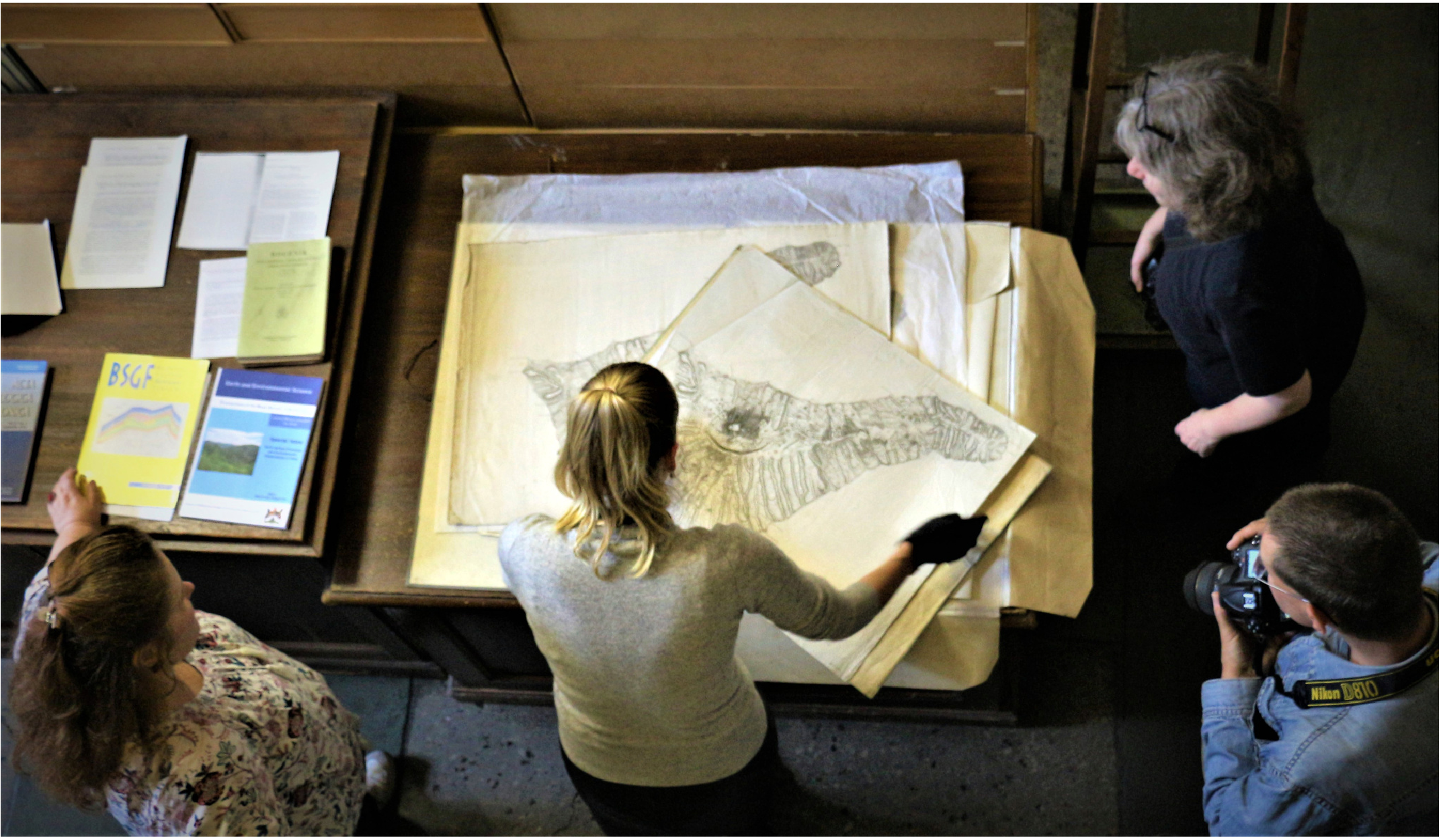
Photography courses and comic drawing courses were carried out in the same way.
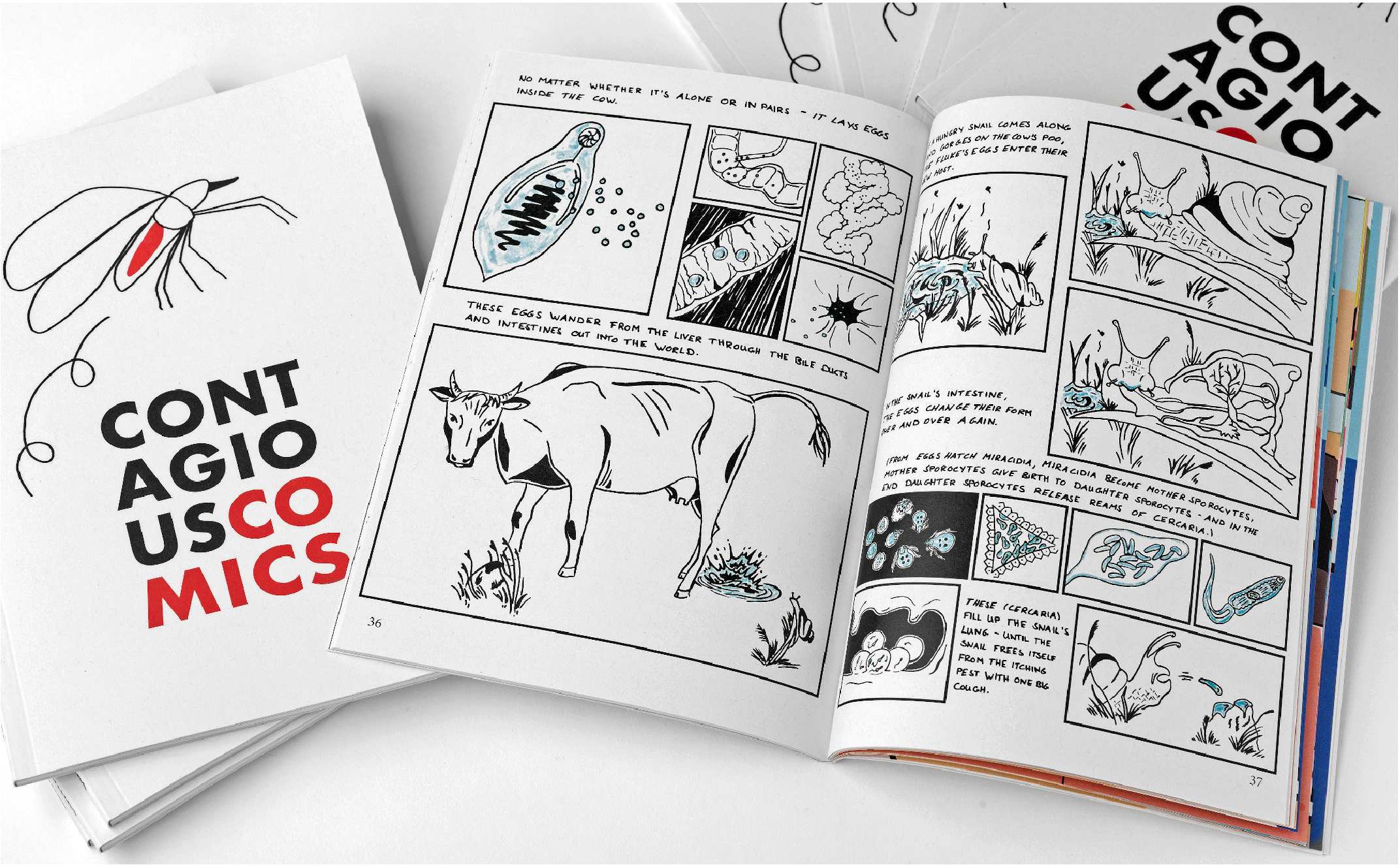
Particularly noteworthy are the courses that were carried out on behalf of individual departments or projects looking for new perspectives: a photo workshop as alternative documentation of the library, writing workshops on various research projects at the museum and a comic workshop as part of the special exhibition on infectious diseases.
A very important format was the “Transcription Workshop” where a group of volunteers transcribed texts from the archives written in old German handwriting (Sütterlin/Kurrent). This group met weekly and transcribed at home as well. The scientists working with historic sources were able to ask the group to transcribe texts for their research. The “Transcription Workshop” was permanently established at the MfN.
5.2 Dialogue
Among the dialogue-oriented formats are the “Science Communication Cafe” (Kaffeeklatsch mit Wissenschaft) and the “Museum Salon”. The “Science Communication Cafe” was a monthly format. Museum visitors, whether they came specifically for this or just randomly passing by, can listen to a short lecture by scientists about their research work. In a subsequent moderated coffee round, the speaker and visitors would discuss the research and the topic itself, as well as the everyday life of a scientist, their motivation and enthusiasm. Input is also obtained from visitors.
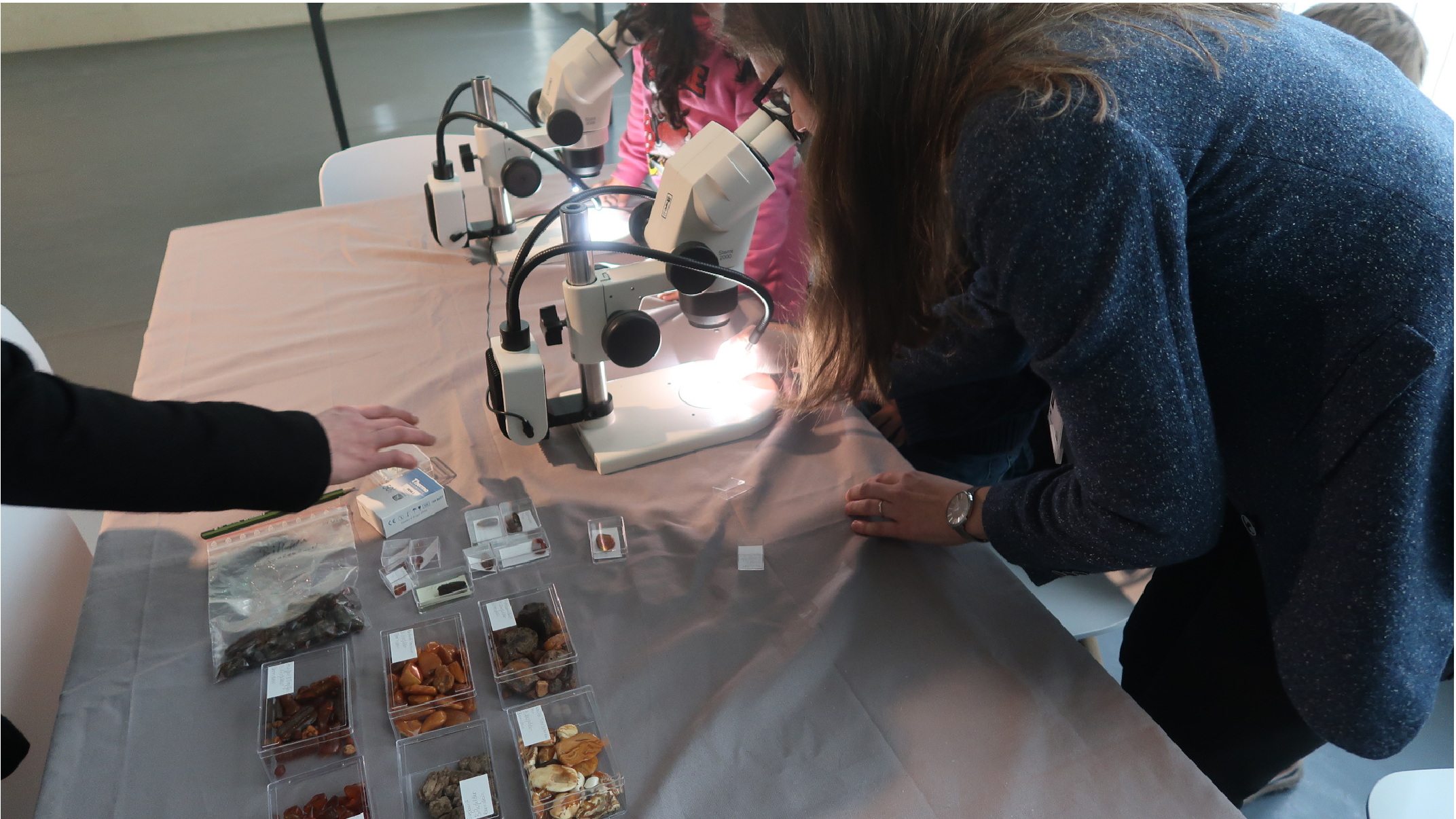
The “Museum Salon” is in essence a dialogue about research work. The events were announced in advance on the museum’s website and on screens within the museum. All visitors who passed by the kitchen area of the Experimental Field were invited to join. At the “Museum Salon”, scientists presented their work in an interdisciplinary exchange. While two scientists sit across from each other and a moderator leads their discussion, exciting conversations between the scientists and the audience take place. As a rule, the researchers did not know whom they will meet and what kind of research the other scientist is conducting. The questions and answers are correspondingly explorative and thus easily understandable for those outside the scientific community. The playful setting allowed for an open discussion between all participants. This aimed to develop new research ideas, by integrating the visitors’ and other researchers’ perspectives. Furthermore, it made cooperation opportunities visible and connected the scientists more closely, both internally and externally.
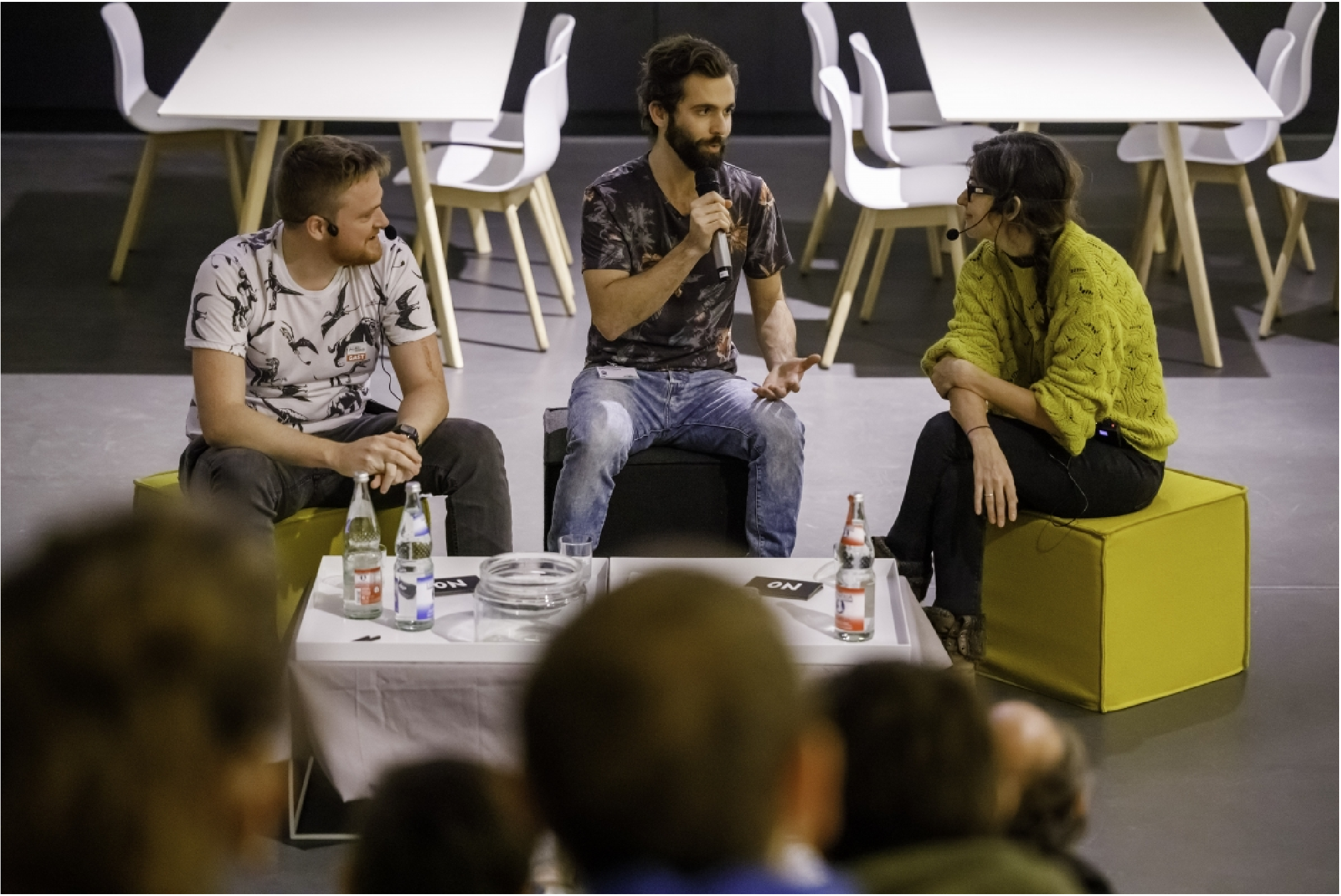
In addition to the pre-organized formats, there was always the possibility of using the spaces of the Experimental Field to get into dialogue with visitors through an object or with a research question, idea or result. Either pre-announced or spontaneously just for the visitors currently present. Many researchers found communicating their own work in this way very stimulating and inspiring. During these dialogues, the participants exchanged views at eye level. As in any direct conversation, it is possible to adjust very quickly to the level of knowledge. The questions immediately reveal which facets of one’s own work interests the other person. The participating researchers reported on a whole range of interests: from everyday work or certain work processes, basic information about the research area, to special questions and their own perspectives on the application of the research.
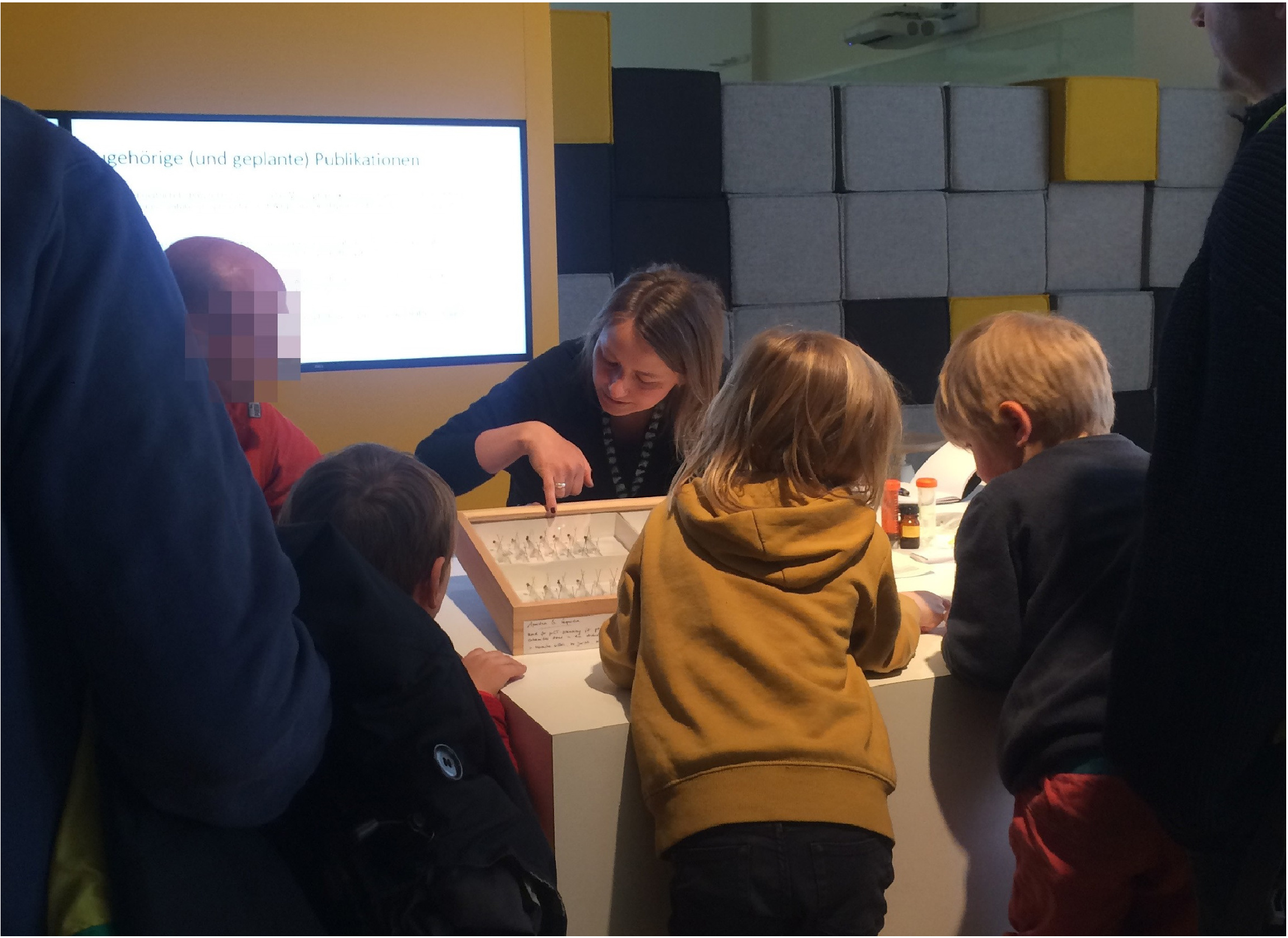
5.3 Deliberation
The third aim of the Experimental Field was to offer space for exchange and to take up social debates and needs. This required special flexibility and a close exchange with external partners. The exchange forum on climate issues is probably the most prominent example. It was created in connection to the first protests of the Fridays for Future movement in a public park near the museum. The movement refers to the findings of science and calls for a forward-looking climate policy based on scientific knowledge.
At the first major day of protest in Germany in March 2019, the museum therefore invited protesters and other interested parties to exchange ideas with researchers from various disciplines. Since then, different events have taken place every week, opening the museum as a platform for exchange and debate on issues of climate change, extinction of species and agricultural turnaround. Visitors could get into direct dialogue with researchers every Friday with free admission to the museum. Initially, this exchange took place in the form of a large forum, where up to 300 students met about 20 scientists and discussed various topics at different tables. Later, this was transformed into a series of workshops, with researchers from the MfN as well as other scientific institutions. The participating researchers rated the format of the exchange forum extremely positive. In particular, they stated it was very stimulating and inspiring. The exchange forum also established more far-reaching links between Berlin’s Fridays for Future movement and the MfN as well as with individual researchers. The workshop series was carried out in cooperation with the activists and reacted flexibly to the group’s wishes for topics. It was carried out during the lockdown as digital workshops until the end of 2021. During all major protests, the Experimental Field organized informative workshops for school groups.
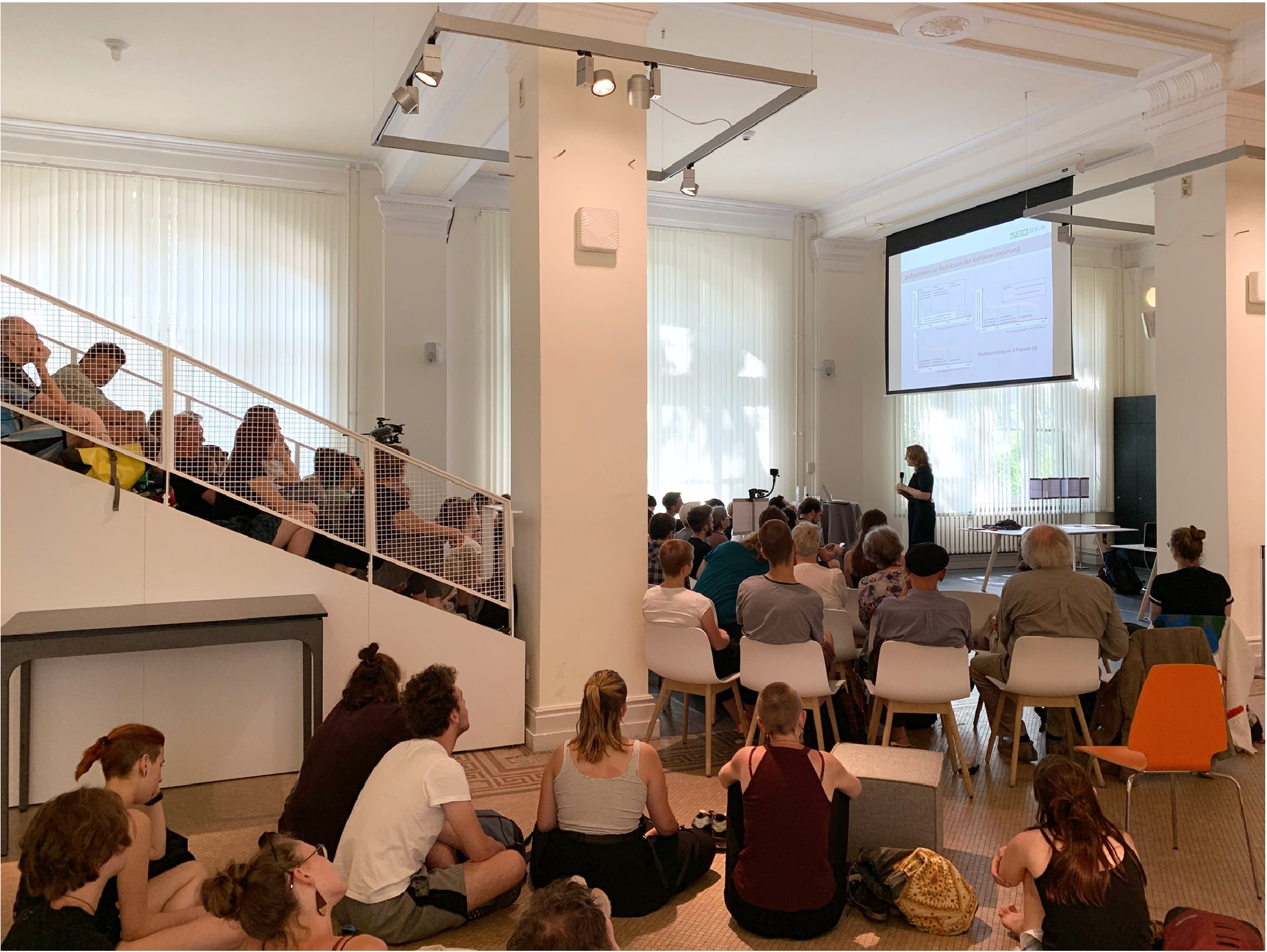
Furthermore, the Experimental Field offered a platform for a self-organized project tutorial (so-called Q-tutorium) by students of the Humboldt-University of Berlin, who debated the value of nature on a weekly basis using different input lectures, museum objects and texts. The students went through a self-developed research process, while they came into direct contact with the exhibits and exhibition content and developed research ideas in the Experimental Field. In the course of their research, they were able to access the museum’s resources repeatedly.
5.4 Training
The student-owned project is closely linked to the fourth and final aim: education and training in the field of dialogical science communication. The Experimental Field gave numerous (young) scientists the opportunity to develop their own formats and to test a dialogue with the public, thereby training their own communication skills. The team of the Experimental Field advised on format development and accompanied on request. Several training sessions for postgraduate students and Ph.D. candidates were given by the team, all including practice sessions in the Experimental Field, actively engaging with visitors.
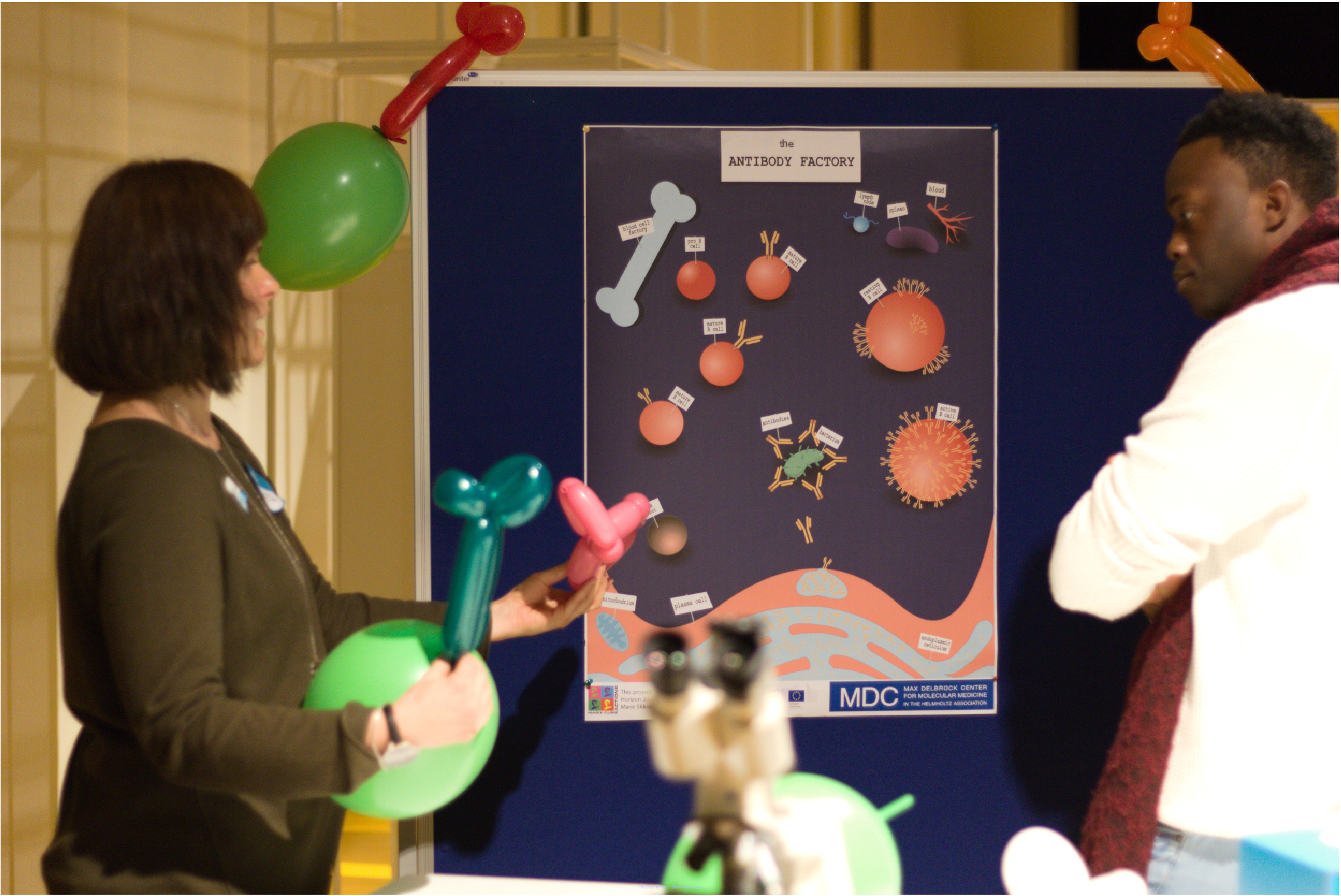
Due to the COVID-19 pandemic, the MfN had to close temporarily in 2020 and 2021. However, the public was able to experience the museum online and attend formats and offerings digitally. While the previous formats took place exclusively on site, the conversion to digital formats was challenging, but also seen as an opportunity to gain new experience. After a short but intensive conceptualization process (in terms of content planning as well as organizational processes and technical implementation), a large part of the formats were offered digitally. These were not just transferred into the virtual space, but instead, we centered on the goals of the respective formats. The concepts were not to be considered final, but could be further developed over time. It was crucial to show a connection to the museum, for example by broadcasting live from the museum and making collection objects visible.
6 Evaluation
The aim of the Experimental Field was to test and develop new formats to open up research and collection, to stimulate a dialogue between scientists and visitors, and to enable participation of the population. All formats were documented and evaluated, partly by an external evaluation agency, in order to adapt and continuously improve the formats or to use the learnings for the development of new formats.
6.1 Methods
During the evaluation, the effects of the various formats of the Experimental Field were examined on the basis of the two main target groups: scientists and visitors. The overarching questions were: do the formats have the effect of stimulating dialogue between science and the population, opening up science, supporting mutual learning in dialogue and promoting scientists in science communication?
A two-part procedure was chosen for the evaluation. First, an overarching impact logic was developed to clarify the understanding of impacts of the categories and to formulate indicators (see Figure 12).

The second stage comprised the examination of impacts based on the formulated indicators with a multi-method approach with different forms of data collection: interviews, focus groups and questionnaires. Each methodological approach was designed differently depending on the two target groups. The questionnaires differed slightly in wording, number of questions or application depending on the format and sample.
Between July 2020 and August 2021, the formats of the Experimental Field, in particular the program categories “Research in Dialogue” and “New Perspectives on Research and Collection” with their respective offerings, were evaluated (see Supplementary material). In addition, responses from previous surveys were evaluated. After each event since the creation of the Experimental Field in 2019, the number of participants was documented and the participants filled out written questionnaires anonymously. In some cases, the team completed observation forms and protocols.
Overview of the data collected:
-
Scientists
Note: methodologically there was no differentiation by category as many scientists were active in several categories and the experiences did not differ in this respect.
-
Written online questionnaire (cross-sectional survey retrospective) |
-
Telephone interviews with individuals |
-
-
Participants
Category “Research in Dialogue”
Category “New Perspectives on Research and Collection”
The quantitative data was analyzed descriptively. The qualitative data was transcribed and analyzed using the documentary method.
6.1.1 Limitations
Samples were at times very small for individual formats in the surveys. Therefore, the results are meaningful for the events, but generalizations to other events and participants are not possible due to unclear representativeness and partly small sub-samples. The scientists participated in different events and in different roles, so that the comparability is limited, but still possible along the central questions.
6.2 Results
The examined formats differed in some cases greatly in terms of the framework conditions, but the participants and scientists surveyed confirmed that the formats were characterized by an exceptionally high quality of dialogue and communication at eye level. The scientists assessed the audience as interested and active, which was perceived as positive appreciation or confirmation of the relevance of their research.
Half of the interviewed scientists had a positively surprising experience. This included “new perspectives on one’s own work” and “recognition of one’s own work” through exchange with the public. One scientist was impressed by the fact that, from her point of view, the digital format meant that a more diverse audience — both more international and different in terms of qualification — took part, but that everyone was equally well integrated.
An increase in knowledge and competences was recorded among the participants. Especially in the course formats such as the “Writing Workshop” or the “Transcription Workshop”, the skills of the participants have also expanded. It is particularly worth mentioning that the scientists were able to expand their competences in science communication, especially in terms of actively dealing with the comprehensibility of the presentation of scientific topics related to the language as well as the way of communicating topics, for example through a reference to everyday life.
Almost all participants and scientists emphasized the high relevance of the dialogue between science and the public likewise. The formats helped to reduce the distance between science and the population. However, some scientists did not perceive any general distance before the events. Through the insight into scientific work, the trust in science increased for the majority of the interviewed participants. At the same time, there was an increased interest in the topics covered. This even applies to the people who wanted to participate only to work creatively or to get an exclusive look behind the science of the museum. The scientists reflect that the development of personal skills in the field of science communication is of great importance. Although the exchange with the public does not provide them with new scientific knowledge (which is not expected from lay public in the first place), the exchange broadens their perspective on their own work. The motivation and energy of the participants were rated as extremely enriching.
A change in the respondents’ future actions could also be observed. The majority of the participants want to continue to deal with the event topics in the future or are now better able to categorize new information on the topics. In perspective, the scientists want to continue to engage in exchange and maintain it to the current extent or even intensify. However, it is important to mention the framework conditions for scientists in the field of science communication are currently still unfavorable in Germany and may other countries. The additional work involved in participating in such formats on a voluntary basis, combined with limited time capacities and a lack of appreciation in the scientific community, can contribute to fewer scientists taking this step.
In the distinction between the analogue and digital variants of the formats, generally no noteworthy or significant differences could be found in the answers of the respondents, although depending on the format, the digital variants sometimes achieved somewhat higher approval ratings. Both variants work well and have their respective advantages and disadvantages. In favor of digital events is a possible wider reach (also outside of Berlin), where people participate in a targeted way and thus presumably show a higher motivation. Furthermore, depictions can be more detailed in digital presentations, but the technical implementation can become a barrier for some people. The exchange was described as open, but also more anonymous. In the analogue version of the events, visitors to the exhibition sometimes spontaneously became aware of the event and joined in, but this can also lead to a higher fluctuation and restlessness. The exchange was assessed as a little more personal and the participants can look at collection objects up close. Depending on the goal of the format, the appropriate medium should be chosen or a hybrid variant should be considered.
7 Conclusions and recommendations
The objectives of the Experimental Field for Participation and Open Science were implemented and evaluated by all participants and scientists as predominantly positive and stimulating. Trust and interest in science were strengthened and new target groups participated in museum activities and provided new insights for the digitization and development of the collections as well as new perspectives on research.
With its innovative formats, the Experimental Field provided a place where the public could participate in research. It was perceived as particularly suitable for assuming a mediating role between science and the population, as the formats are characterized by a high quality of dialogue. In particular, the very high level of support from the Experimental Field team was highlighted, in terms of both advice and implementation. This also shows that participation and dialogue need trained personnel and are rather time-consuming activities to facilitate. The open design resembling that of a kitchen and living room proved to be a low-threshold set-up that allowed for open exchange and deliberation. The multi-use design allowed us to offer a huge variety of formats from shows to dialogues, workshops and lectures, informal meetings and small exhibitions to happen in the same space, which not only allowed us to test different formats but also resulted to be a very suitable solution given limited space in museums.
The authors suggest that even though the qualitative evaluation was only able to document a limited number of impressions, the findings show that participation in formats of deliberation and co-creation seems to motivate to further participation and in opening one’s own research.
The results demonstrate that open research communication in dialogue enables participation in the museum. Focussing on these characteristics and integrating researchers and collection workers as well as participants into the design of the different formats resulted in a diverse formatting and overall satisfaction.
The Experimental Field for Participation and Open Science came to an end in 2021. The outcomes will be integrated into the further development of the museum’s program.
Acknowledgments
We thank the Aktionsplan Leibniz Research Museums and the Robert Bosch Stiftung for funding, the “e-fect dialog evaluation consulting eG for the support in the evaluation process” and the entire Museum für Naturkunde Berlin — Leibniz Institute for Evolution and Biodiversity Science for the support and advice. We especially thank all participants!
References
-
Arnstein, S. R. (1969). A ladder of citizen participation. Journal of the American Institute of Planners 35 (4), 216–224. doi:10.1080/01944366908977225
-
Bandelli, A. & Konijn, E. A. (2015). Public participation and scientific citizenship in the Science Museum in London: visitors’ perceptions of the museum as a broker. Visitor Studies 18 (2), 131–149. doi:10.1080/10645578.2015.1079089
-
Chalmers, N. (2004). Public understanding of research in a natural history museum: the Darwin centre. In D. Chittenden, G. Farmelo & B. V. Lewenstein (Eds.), Creating connections: museums and the public understanding of current research (pp. 276–288). Walnut Creek, CA, U.S.A.: AltaMira Press.
-
Durant, J. (2004). The challenge and the opportunity of presenting “unfinished science”. In D. Chittenden, G. Farmelo & B. V. Lewenstein (Eds.), Creating connections: museums and the public understanding of current research (pp. 47–60). Walnut Creek, CA, U.S.A.: AltaMira Press.
-
Farmer, B. & Louw, H. (Eds.) (1993). Companion to contemporary architectural thought. doi:10.4324/9780203168578
-
Hine, A. & Medvecky, F. (2015). Unfinished science in museums: a push for critical science literacy. JCOM 14 (02), A04. doi:10.22323/2.14020204
-
Köstering, S. (2010). Eine „Musteranstalt naturkundlicher Belehrung“ — Museumsreform im Berliner Naturkundemuseum 1810 bis 1910. In F. Damaschun, S. Hackethal, H. Landsberg & R. Leinfelder (Eds.), Klasse, Ordnung, Art — 200 Jahre Museum für Naturkunde (pp. 37–45). Rangsdorf, Germany: Basilisken-Presse in Verlag Natur und Text.
-
Moldrzyk, U. (2015). Renovació de grans museus clàssics. Nous punts de vista sobre naturalesa? Renovació dels museus d’història natural segons l’exemple de Berlín [English translation available: New views on nature? Renewal of natural history museums by the Berlin example]. Mnemòsine 8, 29–38. Retrieved from http://revista.museologia.cat/ct/arxiu/mnemosine-8
-
Moldrzyk, U. (2019). Wissenschaftsmarketing am Beispiel des Museums für Naturkunde Berlin. In W. Merten & T. Knoll (Eds.), Handbuch Wissenschaftsmarketing: Konzepte, Instrumente, Praxisbeispiele (pp. 335–367). doi:10.1007/978-3-658-25353-0_13
-
Moldrzyk, U. & Gallé, L. (2018). Research and open questions — a modern concept behind Berlins T. rex presentation of Tristan Otto. In L. A. Beck & U. Joger (Eds.), Paleontological collections of Germany, Austria and Switzerland: the history of life of fossil organisms at museums and universities (pp. 1–14). doi:10.1007/978-3-319-77401-5_1
-
Nicholls, H. (2012). Museums: a natural evolution. Nature 484 (7392), 36. doi:10.1038/484036a
-
Oldenburg, R. (1999). The great good place: cafés, coffee shops, bookstores, bars, hair salons, and other hangouts at the heart of a community. New York, NY, U.S.A.: Marlowe.
-
Piontek, A. (2017). Museum und Partizipation: Theorie und Praxis kooperativer Ausstellungsprojekte und Beteiligungsangebote. doi:10.14361/9783839439616
-
Priest, S. (2013). Critical science literacy: what citizens and journalists need to know to make sense of science. Bulletin of Science, Technology & Society 33 (5–6), 138–145. doi:10.1177/0270467614529707
-
Rössig, W., Herlo, B., Moormann, A., Diekämper, J., Jahn, L. & Faber, A. (2018). Visitor participation: an instrument for enhancing scientific literacy. In O. Finlayson, E. McLoughlin, S. Erduran & P. Childs (Eds.), Electronic Proceedings of the ESERA 2017 Conference. Research, practice and collaboration in science education. Part 7: Discourse and argumentation in science education (pp. 1002–1014). Dublin, Ireland: Dublin City University. Retrieved from https://www.esera.org/esera-2017/
-
Rössig, W. & Jahn, L. D. (2019). Participation in a research museum: opportunities and challenges. Spokes #51. Retrieved from https://www.ecsite.eu/activities-and-services/news-and-publications/digital-spokes/issue-51#section=section-indepth&href=/feature/depth/participation-research-museum-opportunities-and-challenges
-
Rössig, W., Jahn, L. D., Faber, A. & Herlo, B. (2018). Handreichung 2018: Partizipation im Forschungsmuseum. Museum für Naturkunde Berlin. doi:10.7479/9hdr-88pb
-
Schuijer, J. W., van der Meij, M. G., Broerse, J. E. W. & Kupper, F. (2022). Participation brokers in the making: intermediaries taking up and embedding a new role at the science-society interface. JCOM 21 (01), A01. doi:10.22323/2.21010201
-
Simon, N. (2010). The participatory museum. Santa Cruz, CA, U.S.A.: Museum 2.0.
-
Vohland, K., Diekämper, J., Moormann, A., Nettke, T. & Rössig, W. (2018). Genome editing als Gegenstand öffentlicher Betrachtung — Herausforderungen für Forschung, Vermittlung und Partizipation. In S. Müller & H. Rosenau (Eds.), Stammzellen — iPS-Zellen — Genomeditierung. Stem cells — iPS cells — genome editing (pp. 299–312). doi:10.5771/9783845291901-299
-
Wissenschaft im Dialog (2022). Wissenschaftsbarometer 2022. Retrieved from https://www.wissenschaft-im-dialog.de/projekte/wissenschaftsbarometer/wissenschaftsbarometer-2022/
Authors
Wiebke Rössig is a political scientist and anthropologist working on participation. She
founded and lead the Experimental Field for Participation and Open Science at the
Museum für Naturkunde Berlin (@mfnberlin) between 2016 and 2021.
@wrzwitscher E-mail: wiebke.roessig@gmail.com
Bonnie Dietermann studied Museum Management and Communcation and was part
of the team from the start as an assistant and later as program coordinator also overseeing
the evaluation.
E-mail: bonnie.dietermann@mfn.berlin
Yori Schultka is a cultural scientist and cultural manager. She was responsible for the
overall coordination of the Experimental Field.
E-mail: yori.schultka@khsb-berlin.de
Suriya Poieam is an architect and scenograph. He designed the space of the
Experimental Field.
E-mail: klong.suriya@gmail.com
Uwe Moldrzyk is Head of Exhibitions at the Museum für Naturkunde Berlin. He
supported and advised the project from the start.
E-mail: uwe.moldrzyk@mfn.berlin
Supplementary material
Available at https://doi.org/10.22323/2.22040801
MfN Survey: Digital Science Communication Cafe
Endnotes
1In the sense of science literacy, museum literacy e.g., the concept of knowing how to engage in deliberative, consulting exchange and discussions, how to join and act in debates.


